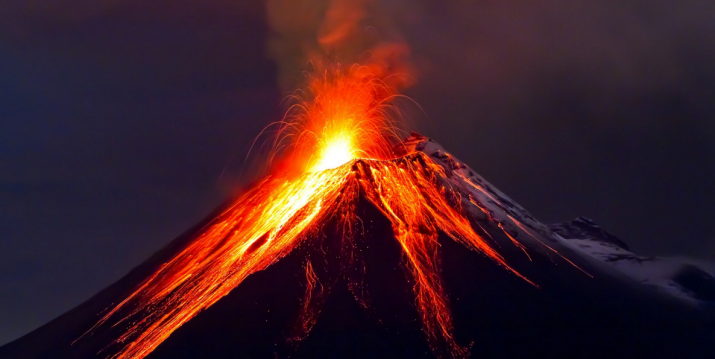
Another blow to the global warming argument: Volcanic eruptions can melt ice sheets thousands of miles away, according to recently discovered ancient evidence
Monday, November 27, 2017 by Janine Acero
http://www.geoengineering.news/2017-11-27-another-blow-to-the-global-warming-argument-volcanic-eruptions-can-melt-ice-sheets-thousands-of-miles-away-according-to-recently-discovered-ancient-evidence.html

Volcanic eruptions from thousands of miles away may cause rapid melting of ice sheets, according to a new study. Volcanic eruptions have been known to cool the global climate, but the findings suggest that they can also speed up the melting of ice sheets.
Researchers from Columbia University studied ice sheets that covered much of northern Europe at the end of the last ice age, around 12,000 to 13,000 years ago. They analyzed ice cores and meltwater deposits called glacial varves, most of which had been collected in the 1980s and 1990s.
Varves are the layered sediments that form when meltwater below an ice sheet routes large amounts of debris into lakes near the sheet’s edge. The layers of a glacial varve indicate each year’s conditions, similar to a tree’s growth rings. A thicker layer indicates more melting, since there would have been a higher volume of water to carry the sediment.
Lead study author Dr Francesco Muschitiello and his colleagues studied a period ranging from 13,200 to 12,000 years ago, when the last ice age was transitioning into today’s warm climate. They tested layers of sediment for sulfates or salts of sulfuric acid, which are abundant in volcanic ash. The results revealed which years experienced explosive volcanic eruptions by the amount of ash debris in the varves.
The research team found out that years with explosive volcanic activity corresponded to thicker varve layers, after matching up the ice layers with varve layers from the same time periods. This indicates more melting of the northern European ice sheet. The team also looked at the Greenland ice sheet, whose layers contain a record of ancient atmospheric conditions, and compared the varves to the ice cores.
The study suggests that ancient volcanic eruptions caused immediate and significant melting of ancient ice sheets. According to Dr Muschitiello: “Over a time span of 1,000 years, we found that volcanic eruptions generally correspond with enhanced ice sheet melting within a year or so.” This suggests the probability of volcanic eruptions rapidly melting modern ice sheets.
Dr. Muschitiello added that the volcanoes were most likely located thousands of miles away from the ice sheets. Volcanic eruptions spew massive clouds of ash that can travel long distances in the atmosphere. Ash that fell on the ice sheet gave it a dark color, enabling more solar heat to penetrate and melt the ice. (Related: A single volcanic eruption caused one of the planet’s most devastating mass extinctions, scientists discover.)
“We know that if you have darker ice, you decrease the reflectance and it melts more quickly. It’s basic science,” said Muschitiello. “But no one so far has been able to demonstrate this direct link between volcanism and ice melting when it comes to ancient climates.”
The research team ran thousands of model simulations and found that the amount of melting depends on the following factors:
- Individual eruption;
- The season in which it occurs;
- The snowpack conditions at the time of eruption; and
- The elevation of the ice sheet.
The model also predicted that ash deposition would remove between 20 centimeters and almost one meter of ice from the highest parts of the ice sheet.
Dr. Muschitiello, however, cautioned that the model results should be “taken with a pinch of salt” due to uncertainties about past conditions. Despite this, he is confident that the ice sheet’s real response lies somewhere within that range.
The preliminary results suggest that the “modern ice sheets are potentially vulnerable to volcanic eruptions,” according to Dr. Muschitiello, and that the study, “can give us hints about the mechanisms at play when you’re expecting rapid climate change.”
Read more news like this at GeoEngineering.news.
Sources include:
Tagged Under: Tags: ancient evidence, climate change, climate science, Earth's natural cycles, environment, geoengineering, global warming, ice sheets, melting ice, volcanic eruption, volcanoes





